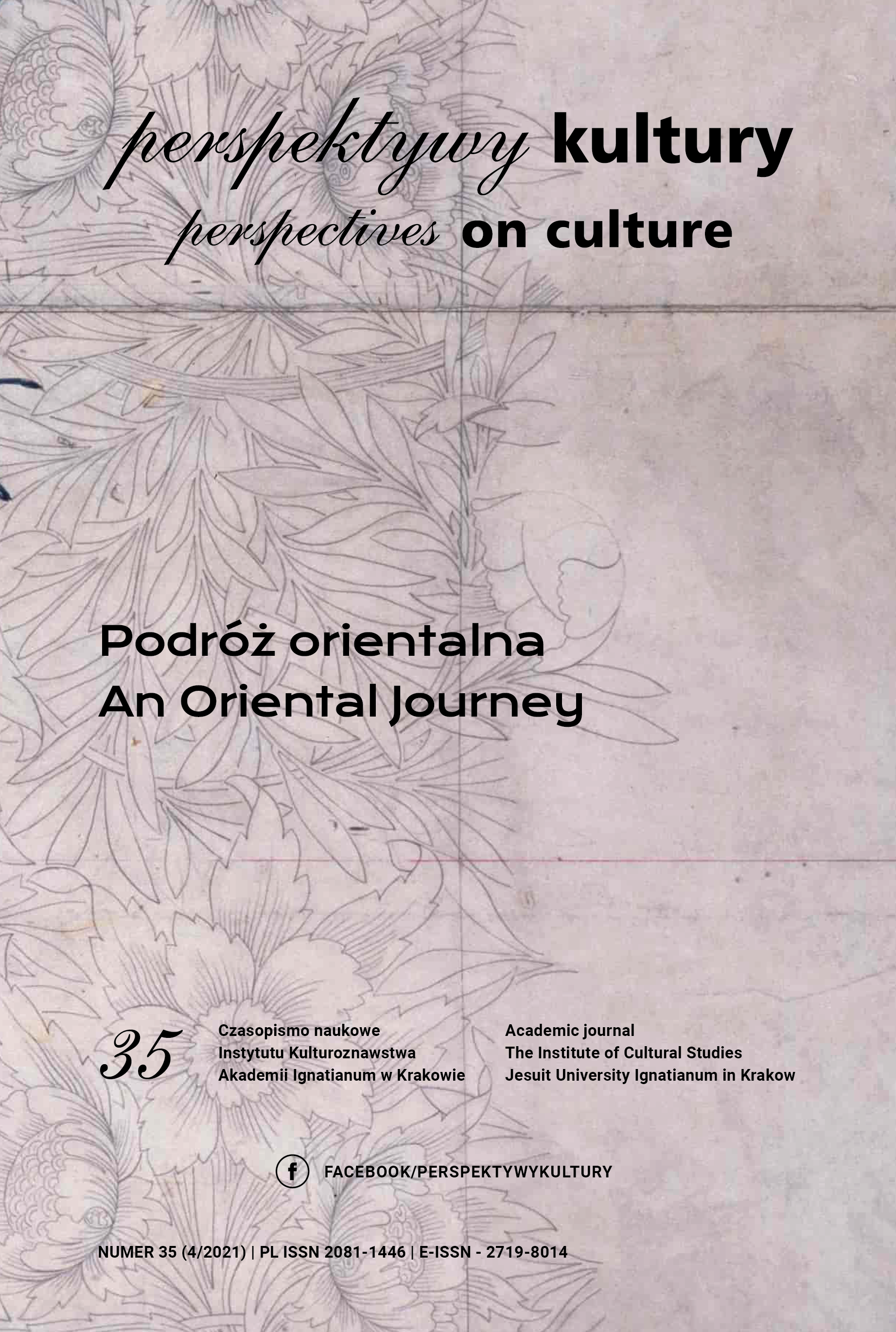The Problem of Female Impurity in Japan in the Light of Sixteenth‑Century European Accounts
Abstract
The purpose of this article was to describe sixteenth-century Japanese women from the religious perspective, by referring to early European sources. For European travelers to Japan it was the time of relatively free and extensive discovery of the country. Prior to the arrival of Francis Xavier in 1549, reports by Nicolao Lancilotto and Jorge Alvareza provided accurate information on women’s “impurity” due to blood pollution, their periodic isolation and restrictions in accessing sacred places (Mount Kōya). The picture was later on supplemented by Jesuit missionaries (Francis Xavier, Luis Frois and Alessandro Valignano) with details concerning Buddhist discourse on women and their rather pessimistic prospects for salvation rooted in the concept of impurity. To fully comprehend European sources on the subject, an attempt was made to verify how well they reflect historical realities of the time. Confrontation against Japanese sources, however, confirmed their accuracy by far.
References
Chōben (1977). Chōben shianshō. W Zoku Gunsho Ruijū Kanseikai (red.), Zoku gunsho ruijū: Shakebu, t. 28. Tōkyō: Zoku Gunsho Ruijū Kanseikai.
Documentos del Japón: 1547–1557 (1991). Red. J.G. Ruiz de Medina. Roma: Instituto Histórico de la Compañía de Jesús.
Frois, L. (1979a). Nihonshi, t. 9, przekł. K. Matsuda. Tōkyō: Chūō Kōronsha.
Frois, L. (1979b). Nichiō bunka hikaku. W Daikōkai jidai sōsho, t. 11, przekł. T. Sakuma. Tōkyō: Iwanami Shoten.
Frois, L. (1983). Historia de Japam: 1583–1587, t. 4, red. J. Wicki. Lisboa: Biblioteca Nacional de Lisboa.
Hora. T. (1991). Teppō: denrai to sono eikyō. Kyōto: Shibunkaku Shuppan.
Kariya, S. (1991). Hokkekyō ni okeru josei. W Nihon Bukkyō Gakkai (red.), Bukkyō to josei. Kyōto: Heiraku-ji Shoten.
Karukaya. (1977). W Y. Muroki (red.), Sekkyōshū. Shinchō Nihon koten shūsei. Tōkyō: Shinchōsha.
Keichō 3 nen oyudono no ue no nikki (1893–1894). W H. Hanawa (red.), Gunsho ruijū. Tōkyō: Keizai Zasshisha.
Kūkai. (1911). Goyuigō nijūgokajō. W Kōbō Daishi zenshū, t. 7. Tōkyō: Yoshikawa Kōbunkan.
Livro que se trata das cousas de India e do Japão (1960). Red. A. Caldado de Almeida. Boletim da Biblioteca da Universidade de Coimbra, nr 24. Coimbra: Imprensa da Universidade de Coimbra.
Mitsuhashi, T. (2009). Shosha kinki ni tsuite: Kodai kara chūsei e no tenkanki ni okeru kegare no shosō. W Meisei Daigaku kenkyū kiyō. Nihon Bunka Gakubu Gengo Bunka Gakka, nr 17. Ōme: Meisei Daigaku.
Nenchū gyōji hishō. (1902). W H. Hanawa (red.), Gunsho ruijū, t. 5. Tōkyō: Keizai Zasshisha.
Onyudono no ue no nikki no kenkyū: shūkyō, yūgei, bungei shiryō sakuin. (1973). Red. Onyudono No Ue No Nikki Kenkyūkai. Tōkyō: Zoku Gunsho Ruijū Kanseikai.
Segawa, K. (1980). Onna no minzokushi: sono kegare to shinpi. Tōkyō: Tōkyō Shoseki.
Shimizu, H. (1977). Kirishitan kankei hōsei shiryōshū. W Kirishitan Bunka Kenkyūkai (red.), Kirishitan kenkyū, nr 17. Tōkyō: Yoshikawa Kōbunkan.
Shōyo, G. (2014). N. Kōdate (red.). Bussestu daizō shōgyō Ketsubonkyō wage. Tōkyō: Iwata Shoin.
Skarga, P. (1862). Żywoty świętych starego i nowego zakonu, t. 2. Petersburg: Nakładem Bolesława Maurycego Wolffa.
Valignano, A. (1586). Catechismus Christianae fidei. Lisboa: Antonius Riberius (wyd.).
Xavier, F. (1799). Cartas de S. Francisco Xavier, apostol de las Indias: en que se dexa ver un vivo retrato de su fervoroso espiritu respirando en sus clausulas un ardiente amor de la virtud, y un implacable odio de los vicios, t. 2, red. F. Cutillas. Madrid: Imprenta de la Viuda de Manuel Fernandez.
Zōise nisho Daijingū hōki hongi. (1970). W I. Ishida (red.), Shintō shisōshū, Nihon no shisō, t. 14. Tōkyō: Chikuma Shobō.
Copyright (c) 2021 Jesuit University Ignatianum in Krakow

This work is licensed under a Creative Commons Attribution 4.0 International License.
Autor, zgłaszając swój artykuł, wyraża zgodę na korzystanie przez Wydawnictwo Uniwersystet Ignatianum z utworu na następujących polach eksploatacji:
- utrwalania utworu w formie papierowej, a także na nośniku cyfrowym lub magnetycznym;
- zwielokrotnienia utworu dowolną techniką, bez ograniczenia ilości wydań i liczby egzemplarzy;
- rozpowszechniania utworu i jego zwielokrotnionych egzemplarzy na jakimkolwiek nośniku, w tym wprowadzenia do obrotu, sprzedaży, użyczenia, najmu;
- wprowadzenia utworu do pamięci komputera;
- rozpowszechniania utworu w sieciach informatycznych, w tym w sieci Internet;
- publicznego wykonania, wystawienia, wyświetlenia, odtworzenia oraz nadawania i reemitowania, a także publicznego udostępniania utworu w taki sposób, aby każdy mógł mieć do niego dostęp w miejscu i czasie przez siebie wybranym.
Wydawca zobowiązuje się szanować osobiste prawa autorskie do utworu.





